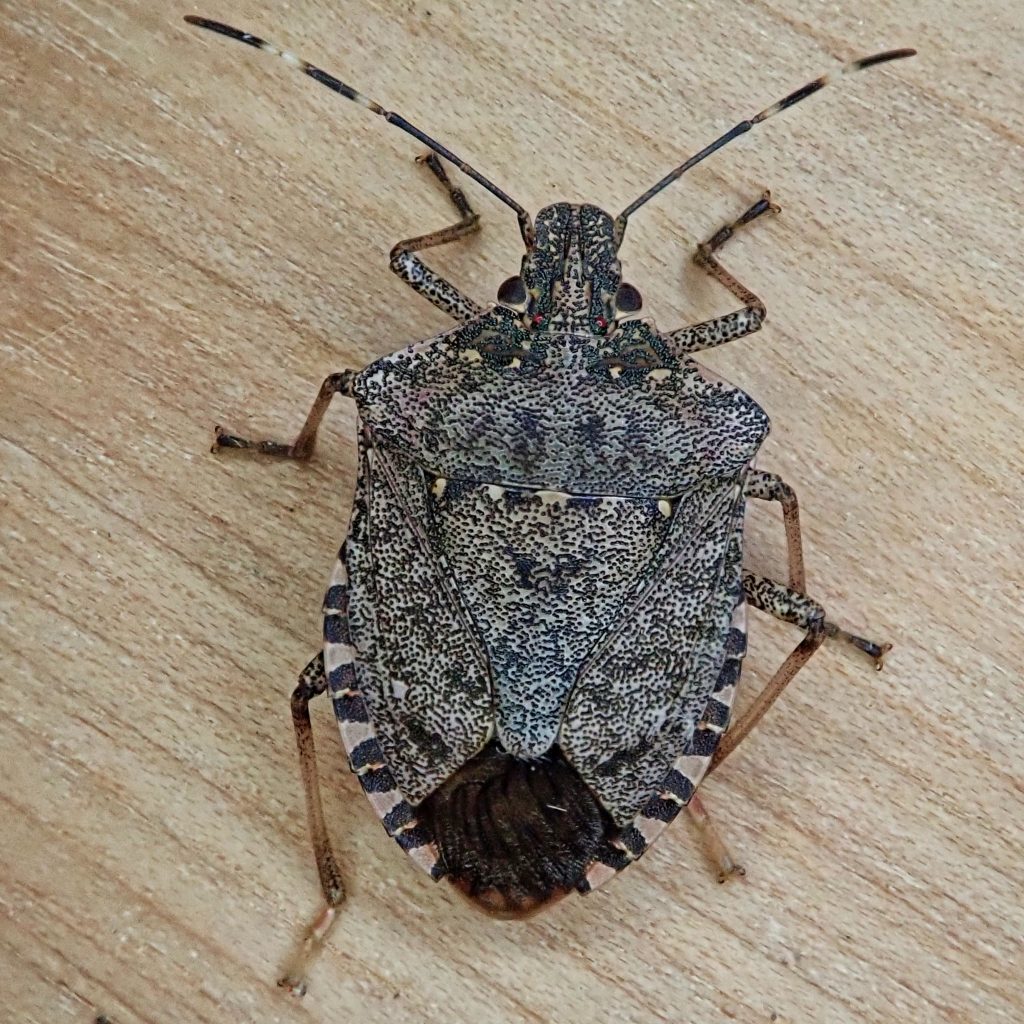
Yet another true bug (Hemiptera) which attempts to invade our homes in the fall is the Brown Marmorated Stink Bug. They are a nuisance pest indoors, and a serious agricultural pest outdoors, costing tens of millions of dollars to farmers, gardeners, and horticulturalists.
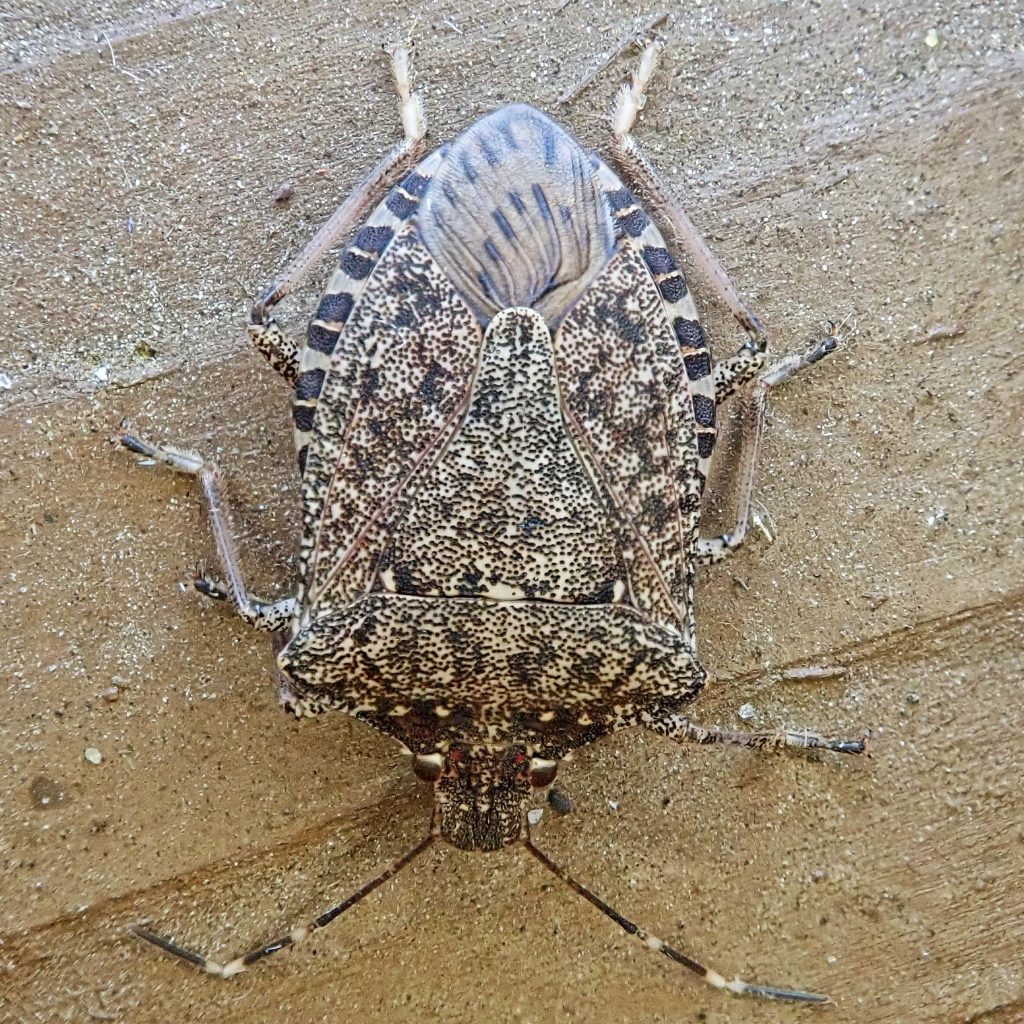
Halyomorpha halys is polyphagous, and will consume almost any vegetable matter, but it prefers seeds, fruits (which includes nuts), and fruiting structures. These wide ranging appetites are why it is such an economically important pest, because it will feed on at least 170 different species and cultivars of plants.
This native of Asia was first detected in Pennsylvania in 1996. By 2004 it had spread to Oregon, and in 2010 it was first found in Washington state. Eggs, nymphs, and adults can be transported in produce and other vegetable matter, and the adults hitchhike long distances while sheltering in vehicles, crates and boxes during diapause. Because they are strong fliers they often disperse widely from the point of introduction. In our region significant populations have been found west of the Cascades, especially along the I-5 corridor. East of the Cascades they have been found near I-90 and I-84, as well as in scattered other locations.
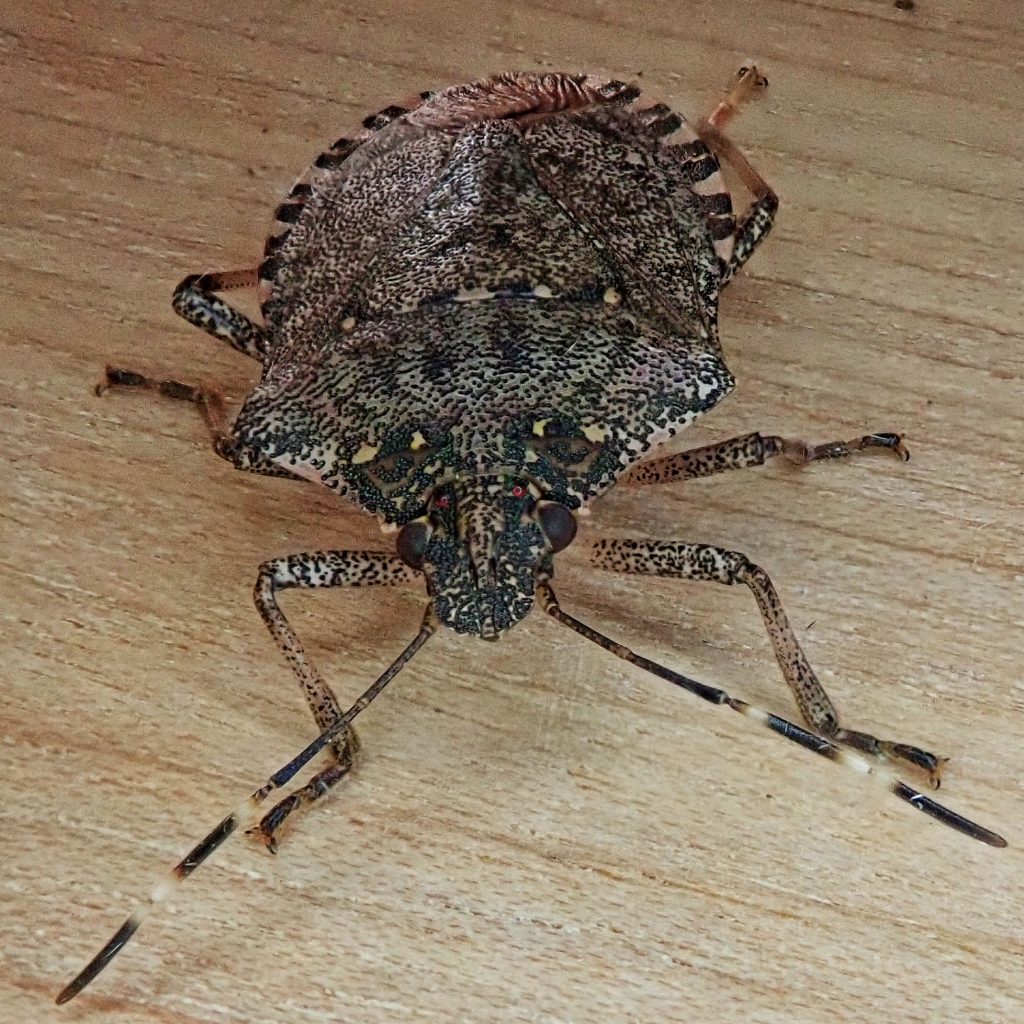
This is a brownish gray bug with a marmorated (like marble) pattern, black and white checked wing margins, and a very dark wing membrane. It is almost as broad as it is long. The antennae are broadly banded black and white. It is superficially similar to several native, and even beneficial, stink bugs, but can be differentiated based on its antennal banding and checkered wing margin. None of our native stink bugs with similar color and pattern have that combination.
Brown Marmorated Stink Bugs can live well over a year, and produce multiple generations. The lessening of daylight, rather than colder temperatures, sends them in search of a shelter in which to hibernate (diapause) through the winter. Since three days after the equinox, when we moved to less than twelve hours a day of sunlight, we have seen an influx of these bugs into our apartment, as well as Western Conifer Seed Bugs and Boxelder Bugs.
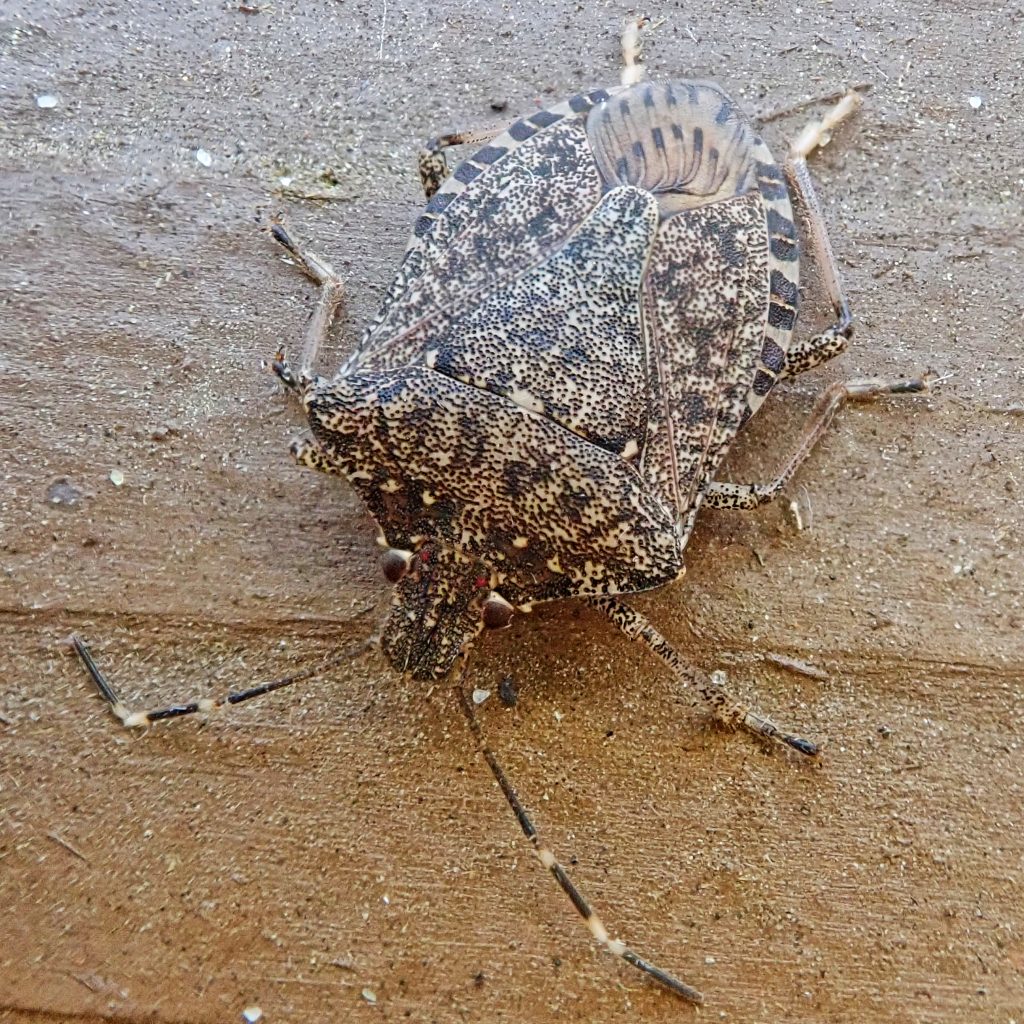
https://en.m.wikipedia.org/wiki/Brown_marmorated_stink_bug
http://entnemdept.ufl.edu/creatures/veg/bean/brown_marmorated_stink_bug.htm
https://www.invasivespeciesinfo.gov/terrestrial/invertebrates/brown-marmorated-stink-bug
https://extension.oregonstate.edu/collection/brown-marmorated-stink-bug-bmsb
Destructive stink bugs taking state by swarm | WSU Insider | Washington State University
Size- 12-17mm
Habitat- Wherever there is a food source; so, anywhere.
Range- Mostly west of Cascades in our region, but also found along other Interstate highway corridors
Eats- Almost any plant matter, but prefers seeds, fruits, and fruiting structures
Flight Season- Adults can be found year around, and are active spring, summer, and fall.
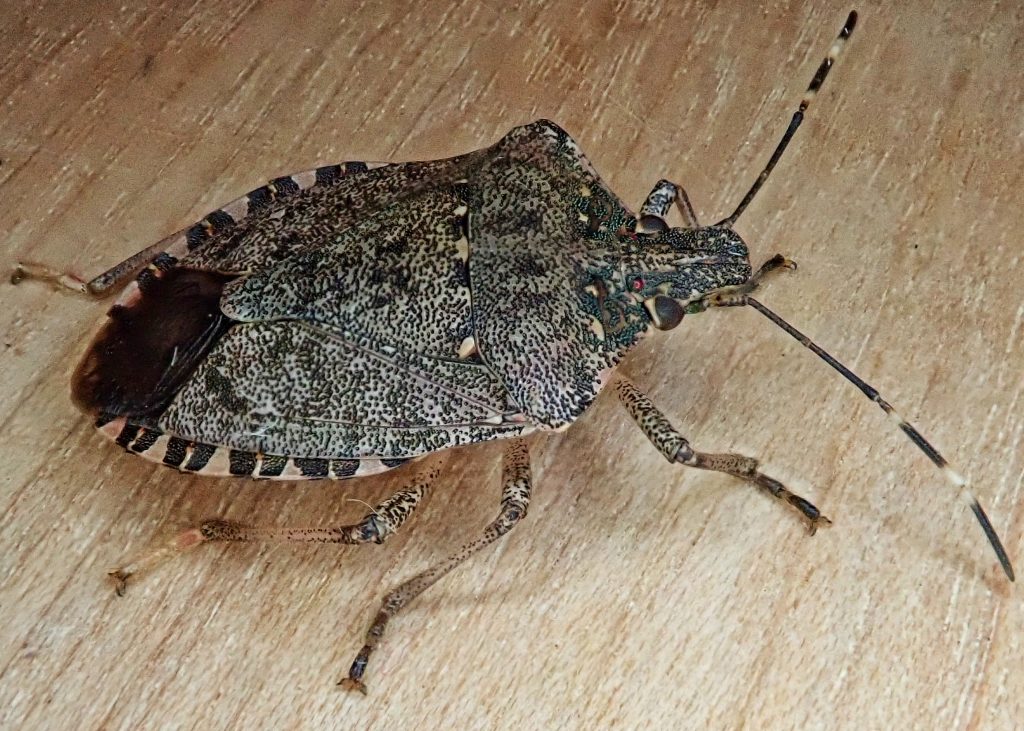
That’s astounding that they were first detected on the East Coast in 1996 and already in Oregon in 2004, but I guess it’s because they were hitching a ride! But like many invasives (the flowering weeds, I’m thinking of) they are pretty!
I agree, on both accounts.